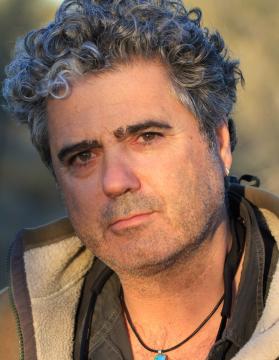
"Our film about the koala forest is one part of a five part Australia series which we produced for NDR Naturfilm DocLights, Arte, Terra Mater and National Geographic. Each part shows a different, typical wildlife habitat and its inhabitants, with one special species as the recurrent theme in each film. For the eucalypt forest our choice was the popular but widely unknown koala. All in all, we and another film team spent more than three years to film the whole Australia series. The koala film took us about one year. Koalas spend a lot of time way up in high trees. The perspective looking up from the ground is rather unattractive, looking up at the bright sky, far away from the animals. So the great challenge was to find a good perspective to get beautiful and impressive footage of the animals. We were eager to film the koalas close up and at eye level. Fortunately, we found a very good spot in the south of Australia. There the koalas´ feeding trees were not so high and the terrain was hilly, so we had a chance to come on one level with the animals. In addition to that, here the koala population was quite high so it was easier for us to spot and keep track of them. Normally, it is hard to even see these animals in the dense eucalypt forest. In the end, we filmed some quite spectacular scenes which show the reputedly lethargic and cosy koala in a completely different light! Another inhabitant of the eucalypt forests which I really like is the lyrebird. He is the Australian master singer and one of the most diverse singers in the bird kingdom. For two weeks, we followed these birds through the dense forest in the east of Australia. We were able to film wonderful scenes of the bizarre courtship rituals of these beautiful, whimsical birds. The strange platypus is very fascinating, too. For many weeks, we tried to film these egg-laying mammals under water. Forever, Thoralf stood motionless in the water, in his wade trousers with a small underwater camera on a pole, hoping that the shy platypus would start searching for food right in front of his lens. The results were meagre, but there are some nice pictures anyway. I can´t really tell what were the most beautiful aspects. There is always quite a bit of frustration in the making of a wildlife film as we can never be sure about the weather and the animals, after all it is nature! So when everything works out in the end and we are able to film all the scenes we dream of, our joy and satisfaction are really great! My colleague Thoralf Grospitz and I have produced about 25 large documentaries together. We have been filming wildlife all over the world for more than 20 years now. For us the most important production is always the most recent one or the one we are working on at the moment. For me personally, a very important film was our second big production in 1995. Then we filmed sea turtles in Costa Rica. We spent many months in solitude at a remote beach without electricity and running water. We had to overcome great logistic challenges, carrying not only our complete film equipment but also generators, fuel, and food for several weeks on foot over the mountains and through dense forest to our filming site. And then we waited for the turtles to arrive. At the moment we are filming a documentary about giant red kangaroos in Australia, the world´s largest marsupials. After that we might continue to work in Australia but we might also have the chance to go to Africa. We are developing new scripts at the moment but have not fixed anything yet. Neither Thoralf nor I have ever been in Valtellina and Sondrio. But our colleagues have given us good feedback about the festival as well as the region. Nice mountains, beautiful landscape, and good wine! It is really a pity that we cannot come to Sondrio in October, as we will be back in Australia again, filming. We will definitely be missing an interesting festival, meeting old friends and making new ones, and enjoying the wonderful autumn in the southern Alps".